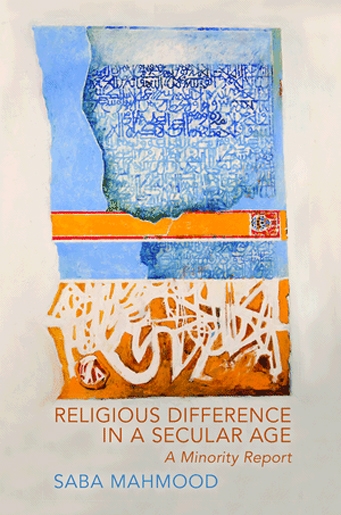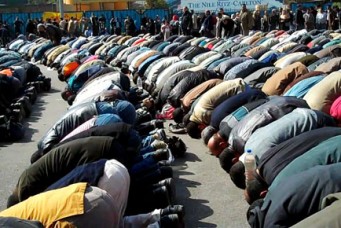The Problem with Secularism
How the modern nation-state got religion wrong.
Religious Difference in a Secular Age: A Minority Report. By Saba Mahmood. Princeton University Press, Princeton, 2015. 242 pp.
Is religious inequality and friction in Egypt and the wider Middle East a result of inadequate secular governance? Anthropologist Saba Mahmood challenges this common refrain.
In Religious Difference in a Secular Age: A Minority Report, Mahmood argues that by solidifying religious divisions and emphasizing differences, modern secularism itself has heightened tensions in countries like Egypt. The modern state and the secular political rationality that animates it, she argues, has paradoxically made religion a more, rather than less, significant part of the lives and subjectivities of those who belong to both minority and majority communities.
In Mahmood’s view, while political secularism extricates religion from politics and relegates it to the private sphere, it positions religion as an essential aspect of individual and collective identity, thereby emphasizing rather than de-emphasizing religion, increasing rather than decreasing its importance. As it promises to free the state from religion and religion from the state, secularism, by defining and limiting religion’s appropriate place in society as private, personal belief, restricts and polices the practice of religion. Secularism thus reserves itself the right to adjudicate on what constitutes an integral aspect of a “belief system” and is therefore entitled to protection under the state’s commitment to religious freedom and equality.
Mahmood’s book traces the institutionalization of political secularism in Egypt. It examines, as she puts it, how “the regulation of religion under secularism has not simply tamed its power but also transformed it.” Rather than eliminate religious tension, discrimination, and injustice, Mahmood writes, regulation has intensified interreligious inequality and conflict, the valuation of certain aspects of religious life over others, and the precarious position of the country’s religious minorities. She sees historical developments, both international and regional, as crucial factors in how religious differences came to be conceived and embodied in modern Egypt. She looks, for example, at the formidable impact that especially British and American missionaries had on the way the category of religion was reimagined, and the role they played in determining what forms of religiosity are considered deserving of legal protection in the modern period. This is a definition enshrined in Article 18 of the Universal Declaration of Human Rights, seen by many as a “secular accomplishment” though significantly shaped by Protestant ideas about religion. During the nineteenth century, Mahmood points out, religious liberty came to be associated with the individual, rather than the collective; it is a formulation, she notes, that would be enshrined not only in human rights protocols but in the national laws and constitutions of the Middle East.
Taking her case further, Mahmood outlines the development of the concept of “national minority,” which she believes is grounded in a fundamental tension. While it attempts to include a minority within the nation, it also constructs that group as an obstacle to national cohesion as a result of its “deviance” from the majority. “Recognizing a group as a minority,” she writes, “transforms its self-understanding, its relationship to other religious communities and the state, and its standing in the eyes of the law.” Religious liberty and minority rights emerge as techniques through which secular liberal governance manages differences by, for example, circumscribing religion within the sphere of family or personal status law.
A prime example is the labeling of Coptic Christians as an Egyptian minority, a practice that began in the 1920s. What was once seen as a dangerous and divisive category that could obstruct the development of a unifying national sensibility—an Egyptian identity that transcended religion—later came to be regarded as a necessary means of protecting Copts’ religious and cultural customs as well as their civil rights. Significantly, as successive Egyptian regimes neglected the welfare of citizens, Islamist groups and the Coptic Church became increasingly important in serving and representing the interests of religious communities.
Mahmood challenges the common assumption that family law is a carryover from premodern times, arguing that it is the juridical manifestation of the privatization of religion under secularism. By thus making the family, and by extension sexuality and gender, the locus of faith, Mahmood says, family law exacerbated the contentious nature of conversion and interreligious marriage. Secular governance effectively transformed both religion and kinship relations, amplifying certain doctrinal edicts and muting others, accentuating religion’s jurisprudential dimensions over other moral and ethical concerns.
Another example of circumscribing religion in the name of secular regulation is the case of Egypt’s Bahai community. Egyptian courts have drawn on the concept of public order to deny Bahais the right to practice their religion in public (by, for example, listing their faith on government-issued documents), using the concept of religion as personal belief to claim that by permitting Bahais their private faith, the government is performing its duty towards them as citizens. By preventing Bahais from expressing and engaging their religion through publicly perceptible practices, Egyptian courts claim to be safeguarding the values and sensibilities of the country’s Muslim majority, which might be offended by demonstrations of an unrecognized faith. Mahmood uses the example of the Bahais to show that “key secular concepts, when adopted into different religious and legal traditions, produce very similar kinds of effects.” They allow the state, for example, to make claims on the substance of a religion, to define what is and what is not an essential aspect of a given belief system, and therefore in need of protection. Mahmood compares this with European legal judgments on the Islamic veil, which has been repeatedly declared a “symbol of gender inequality rather than a religious duty” by the European Court of Human Rights. In such instances, the court takes it upon itself to engage in theological interpretation to support European states seeking to prohibit, for example, public school teachers from donning the headscarf, seen as a potential means of “influencing” students’ religious proclivities.
Religious Difference in a Secular Age persuasively highlights the ways in which the modern secular state cultivates religious difference, reinscribes religious inequality, and prioritizes majoritarian values and sensibilities over those of its minorities while claiming to be a neutral arbiter between communities. The author acknowledges that secularism is not something that can be done away with, any more than modernity can be. Though Mahmood declines or fails to envision an alternative, she argues that depriving secularism of its “innocence and neutrality” can help craft a different future.
Sophie Chamas is a doctoral candidate in the Faculty of Oriental Studies at the University of Oxford. She was the co-recipient of the 2012 Anna Lindh Mediterranean Journalist Award in the category of new media. She has contributed to Al Jazeera English, Al-Monitor, VICE, Arab Review, and Jadaliyya. On Twitter: SophsC87.
Subscribe to Our Newsletter




